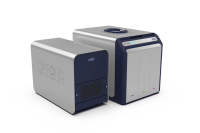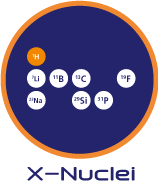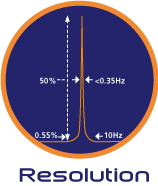X-Pulse
A revolution in the flexibility of benchtop NMR which combines true broadband X-nuclei capability, flow chemistry, reaction monitoring and variable temperature with superior spectral resolution, X-Pulse lets you perform a wide range of experiments on the bench in your lab.
X-Pulse uses a 60MHz permanent magnet with high homogeneity and temperature stability making it easy to position in a lab and requires no liquid cryogens. X-Pulse may be used with either standard 5mm NMR tubes, or our easy-to-use flow cell.
The system is controlled by a new and improved version of our SpinFlow data acquisition software making it easier to perform routine experiments and more flexible than ever for advanced users.
Pulsed field gradients and shaped RF pulses are available as standard for coherence selection, selective excitation and water and solvent suppression.
Choose your Nuclei
True broadband capability: Select the nuclei you need, 1H, 13C, 31P, or something more unusual like 29Si, 11B, or 7Li. Simply choose the nucleus of interest in the software then adjust the probe to ensure you are operating under the optimum conditions. Maximising the signal-to-noise ratio for some benchtop NMR experiments can be the difference between success and failure. The X-Pulse has exceptional sensitivity – 120:1 (broadband) and 180:1 (1H/19F) for 1% ethyl benzene which makes success more achievable. For nuclei with low receptivity, such as 13C or 31P, ensuring sensitivity is paramount. Tuning and matching for each specific nuclei allows maximum signal-to-noise ratio to be achieved.
High Resolution
With X-Pulse your NMR peaks are easier to separate and lower concentrations become visible. X-Pulse uses a 60MHz (1.4T) permanent magnet. New shimming technology in X-Pulse allows us to generate an extremely homogeneous field, delivering resolution of less than 0.35Hz at the half-height and lineshape of 10Hz at 0.55%.
Peaks are easier to identify but also combined with shaped RF pulses solvent suppression is much more effective allowing even challenging compounds such as sugars and starches dissolved in water to be analysed.






